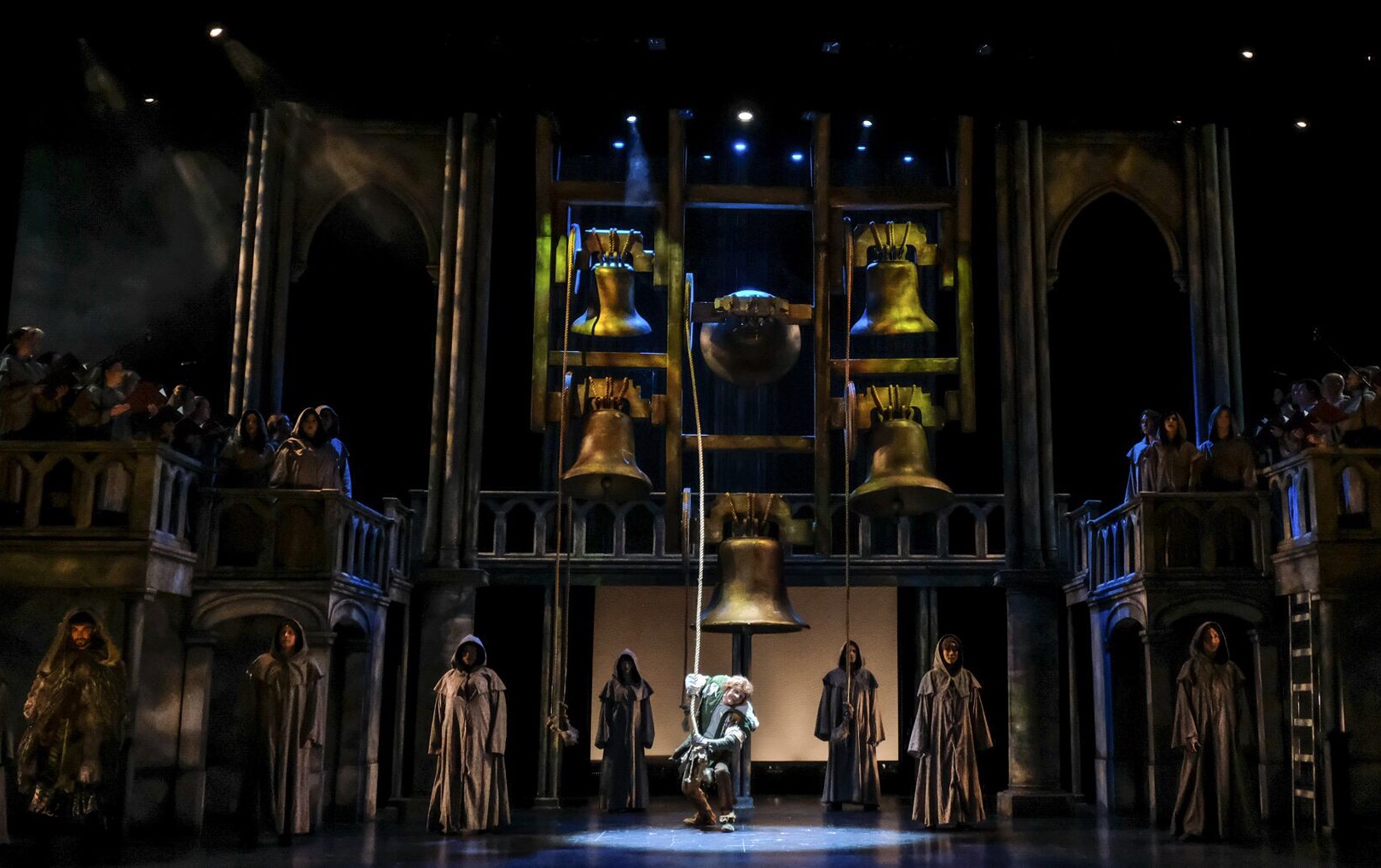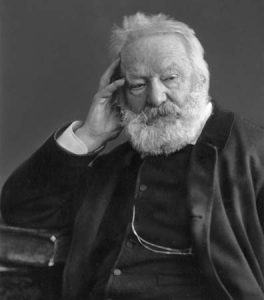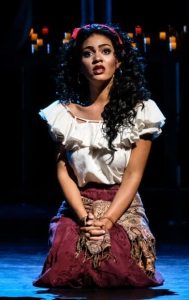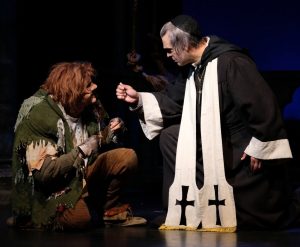Moonlight’s OK ‘Hunchback’ Is Torn Between Two Competitive Worlds

Quasimodo (David Burnham, center) reminds Paris of its obligation to religious treachery. Photos by Ken Jacques.
Add a wave of early-day electronic graphics refinements, and this thoroughly seamless Peter Parnell story is among Disney’s most captivating labors of love, now and forever.
Translating it to another medium, however, is another matter. Four years out from the show’s North American premiere at La Jolla Playhouse, Vista’s Moonlight Stage Productions is giving the installment a go — and as radiant as this mount may be, it has a tendency to saturate the mind’s eye in favor of angst-ridden theatrics.
Adaptations are devilishly difficult to get right amid the patrons’ demands for imagery and context (witness Rent, the 2005 insult of a film carved off the back of the colossal 1996 Broadway show) — in this case, and not unlike Rent, the taking-it-too-seriously factor could use some work.

France’s Victor Hugo wrote ‘The Hunchback of Notre Dame’ as a nod to religious liberty. Public domain photo.
Though the latter easily wins Esmeralda’s heart, Quasi is central to the much bigger picture — an uprising against Frollo and his oppressive governance in His Holy Name. Esmeralda is thus a figurehead for the throng of liberated Parisians, while the latter likely embrace the once-feared Quaz as their de facto liberator. (Note: The show’s conclusion is vastly different than that of the animation.)
The evil pretense surrounding Frollo’s assumption of the young man’s care; the emptiness that scrapes at his endless days as he watches medieval Paris teem by, with only gargoyles for company; the ridicule at the Feast of Fools bash as he’s derisively chosen its king; Esmeralda’s fondness for him in the face of Frollo’s opprobrium; his heroic turn of heart on the city’s behalf: There’s a ton of stuff to build subtext on here, and director Steven Glaudini articulates it all with urgency.
Often, though, that’s the problem. While the stagecraft is enticing, it’s also uniformly explosive, with each scene taking on the same insistence as the ones before and after it. The audience is left to process the action without benefit of reflection — it’s the difference between the salesman who quietly encourages your thoughtfulness and the one who shoves his products down your throat before you’re ready to buy.

Esmeralda (Janaya Mahealani Jones) declares herself an outcast and seeks God’s help accordingly.
But my, for the choir! It’s a character in itself, as 22 performers herald Frollo’s treachery and their allegiance to Quasi and Esmeralda. They’re in great voice, just as they are in the animation, a veritable Greek chorus run amok (in a good way).
And do enjoy Patrick Cummings as Phoebus, whose imposing figure and commanding vocals (‘‘Rest and Recreation’’) advance the action. Lance Arthur Smith’s Frollo falls into the same league, his unrelenting demeanor at the fore in numbers like ‘‘Hellfire.’’
Less inspiring is David Burnham as Quasimodo, whose predictable affectations offer little contrast to the character (in the animation, for example, Quasi’s voice and mental faculties are topnotch despite his appearance). Janaya Mahealani Jones’ Esmeralda is lovely and persuasive (‘‘God Help the Outcasts’’), but she’s a gypsy dancer, after all; and Janet Swenson’s lush costumery obfuscates her postures and movement.
Swenson excels in most other aspects, chiefly in Frollo’s dress and in the button-down look she’s chosen for Richard Bermudez’s major-domo Clopin Trouillefou (‘‘The Bells of Notre Dame’’).

Quasimodo (David Burnham, left) submits to the evil tutelage of Dom Claude Frollo — for now.
In 1938, the New York Drama Critics Circle chose John Steinbeck’s Of Mice and Men play adaptation as the year’s best, yet Steinbeck called his effort a “failure.” Gone, he said, was the lush Salinas Valley imagery only his novella could impart; the relationship between the characters was devoid of subtext that made their impressions stick. In its own way, this Hunchback illustrates the same idea. Although it’s no failure by any means, the Disney animation is its undisputed home. In the sprawling world of performance art, live theater is not always the most genial of hosts.
This review is based on the opening-night production of Aug. 15. The Hunchback of Notre Dame runs through Sept. 1 at Moonlight Amphitheatre, 1250 Vale Terrace in Vista. $17-$55. moonlightstage.com, 760-724-2110.

Martin Jones Westlin, principal at editorial consultancy Words Are Not Enough and La Jolla Village News editor emeritus, has been a theater critic and editor/writer for 25 of his 47 years…
More…
